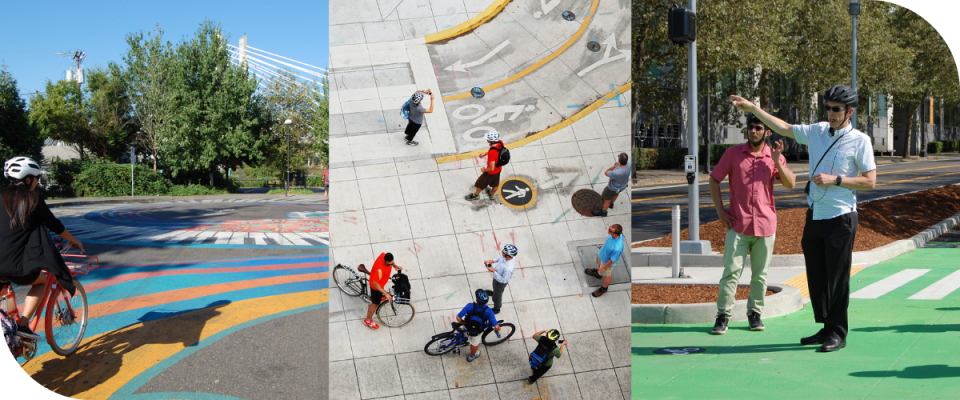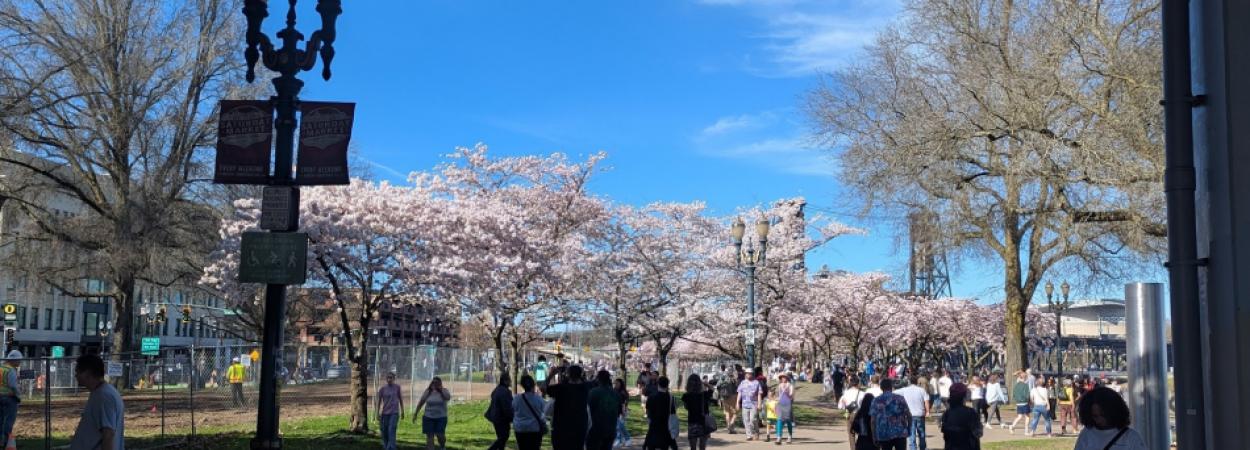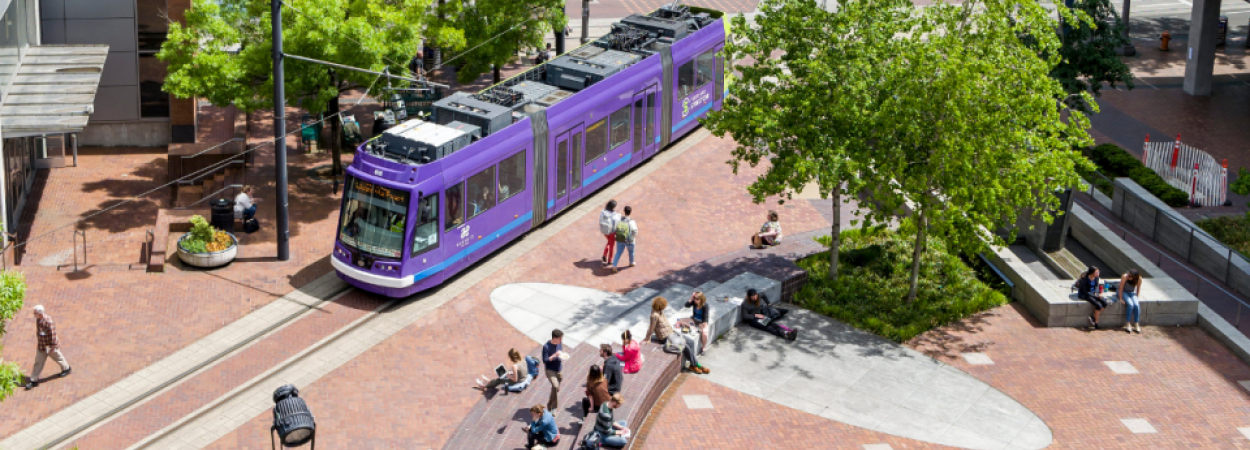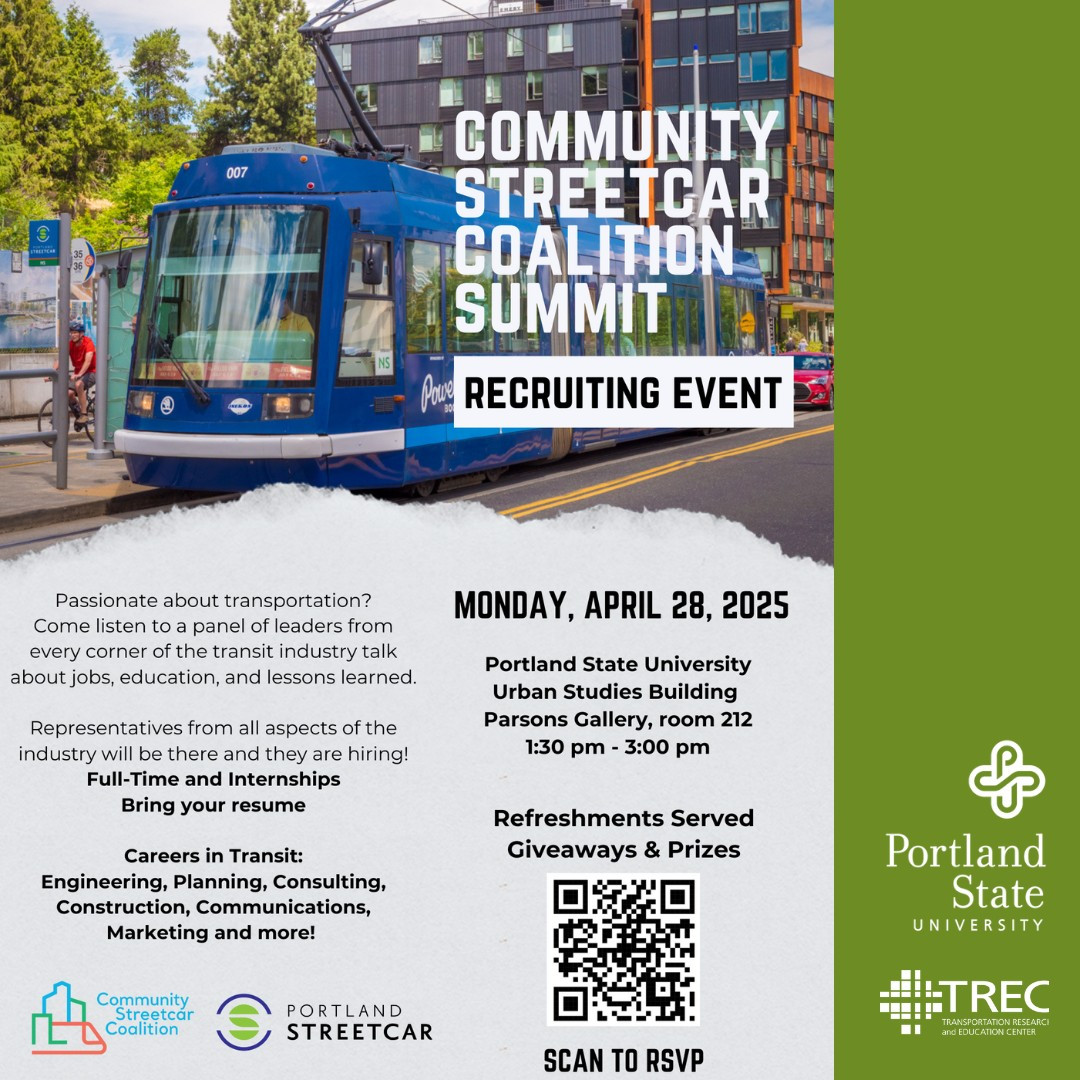IBPI Workshop: Comprehensive Bikeway Design
This year's workshop will be held Aug 25–29, 2025
REGISTER NOW
As Portland, Oregon has put bikeway plans into effect, we’ve learned what works and what doesn’t—how to plan effectively, design correctly and make investments that get results. We’ve distilled those lessons into this course, which covers the fundamentals of bikeway design and planning through an intensive week of interactive classroom, field tours, and design exercises.
Instructors draw from their years of experience, along with project examples, to highlight practical applications of the principles and techniques covered. The pioneers and leading practitioners in the field will teach the fundamentals of bikeway planning and design through an intensive week of classroom sessions and tours. The instruction and interaction with other participants will bring you up to speed on innovative practice and research and teach you the skills and techniques you need to get started on your next project.
Over the years, the Portland area has implemented numerous types of innovative bicycle facilities and treatments. Daily field tours provide first-hand experience with these facilities and projects discussed in the classroom. These tours showcase not just the operational qualities but also how bikeway planning affects community livability and economic development.
Upon completion of the course, participants will be able to:
- Make low-risk investments in proven bicycle plans and facilities
- Select the appropriate bicycle facility design based on urban form, traffic conditions and multimodal context
- List the different ways that a bicycle facility can meet or not meet the needs of people who bike
- Use the FHWA Experiment process to test innovative bikeway design
- Describe the tradeoffs of designing better facilities to accommodate all road users
- Identify various options for treating intersections that incorporate bicycle facilities
- Describe the health benefits of active transportation
- Identify opportunities, strategies and programs to encourage more people to bike and walk
- Talk to an engineer and communicate effectively with them about facility requirements
- Build their personal network with experts from the various facets of bikeway design
- Feel rejuvenated and excited to go back to work and make an impact!
This course is offered through our Initiative for Bicycle and Pedestrian Innovation program.
WHO SHOULD ATTEND?
Hosted since 2009, our Bikeway Design workshop is designed for transportation engineers, urban planners, advocates, policymakers, municipal staff and other transportation professionals interested in nurturing cycling in their communities. See photos from workshops of previous years.
Students must be able to bike 8–15 miles a day, and expect mild elevation. With daily bike rides, this course is physically demanding. Participants who aren't used to riding multiple miles per day have the option of renting e-bikes (we have a limited number, while supplies last). Having an e-bike gives you the same view and makes it easy to keep up with the group!
REGISTRATION
Register now for the 2025 workshop.
If you are not able to attend this year, email us at asktrec@pdx.edu if you would like to be added to the waitlist, or sign up to be notified as soon as applications open next year.
The workshop will be held Aug 25–29, 2025.
The workshop fee is $1575 for participants who bring their own bike, which includes:
- Light breakfast (daily)
- Lunch (daily, via local Portland food carts)
- Additional snacks (you won't go hungry!)
- Electronic course materials
Additional cost to rent a bike for the duration of the workshop:
- $145 for multi-speed
- $295 for e-bike (limited number available)
Rented bikes will be available for pickup from 10am - 6pm on Sunday, Aug 24 – the day before the workshop. If possible, please plan to arrive in Portland and pick up your bicycle on Sunday. We will build in time to pick up bicycles on Monday for those who are not able to pick up early.
Overnight bike rentals must be stored inside a domicile (hotel room/concierge closet, living room, etc). A shared bike room is not a safe location. Bike rentals cannot be stored outside overnight - it is a violation of the rental policy and you will be responsible for any theft or damage if stored in a shared bike room or outside.
INSTRUCTORS
John Macarthur, Sustainable Transportation Program Manager, TREC at PSU
Nick Falbo, Senior Integrated Mobility Consultant, Mobycon Inc
Dru Van Hengel, Nelson\Nygaard
Roger Geller, Bicycle Coordinator, City of Portland
Peter Koonce, Division Manager, Signals & Street Lighting Division, City of Portland
Shelley Oylear, Transportation Engineer and Planner, Washington County, Oregon
WORKSHOP AGENDA
Below is an example of our typical workshop schedule (e.g. bike rides may shift in timing according to weather, etc.). Days begin at 8:00 AM, and end at 5:00 PM, unless otherwise noted.
MONDAY
Introductions + Orientation
Setting the Context for Bicycle Facility Design
Field Tour (Portland): Bicycle Facility Design - The Good, The Bad, The Ugly
Bicycle Facility Design: Bike Boulevards
Evening: Social Hour (optional, after 5PM)
TUESDAY
Field Tour (Portland): Bicycle Facility Design - A Low Stress Network
Innovation in Bicycle Facility Design: Network Approach and Protected Bike Lanes
Innovation in Bicycle Facility Design (cont.)
WEDNESDAY
Traffic Engineering Techniques in Support of Active Transportation: Intersections, Signals, and Other Principles
Field Tour (Portland): Traffic Engineering - The Bike Edition
Pathways to Innovation: Evolving Guidance and Standards in Bikeway Design
THURSDAY
Designing for Suburban Environments
Field Tour (Washington County): Bicycling in a Suburban Environment
Multimodal Integration: Making the Transit and Bike Connection
FRIDAY
What Design Problems Are You Challenged By?
Closing Lunch and Conversation (ends at 1 PM)
Alumni
"I came into the course hoping to learn new insights on bikeway design and left with all my expectations being exceeded. The TREC staff were amazing during the week providing us with resources and support. Additionally they did a wonderful job putting together a great group of panelists that brought with them a breadth of experience, knowledge and skill."
-2021 attendee
"We are currently in the process of designing some of our first bike lanes. I plan to use the knowledge gained from intersection treatments and shared bike/ped infrastructure to improve our proposals."
-2021 attendee
"I came into the course with very minimal experience with bikeways and how it affects traffic with the implementation of these bike lanes/pathways. The course has taught me that it takes a bit of thinking outside the box to make bikeways work even if it doesn't seem very conventional or helpful."
-2019 attendee
"The course provided guidance on many innovative solutions for enhancing bicycle safety and circulation. The reasons behind prioritizing bicycle travel were also useful, as well as the policy context for focusing on bicycle infrastructure."
-2019 attendee
HOUSING and ACCOMMODATION
We can recommend some nearby hotels and tips for getting around town. Air B&B and Vrbo are another potential source to find a comfortable place to stay.
Requests for reasonable accommodations may be made to Conference & Events Office, (503) 725-CONF, email: conferences@pdx.edu or the Disability Resource Center, (503) 725-4150, e-mail: drc@pdx.edu. In order to ensure that reasonable accommodations can be provided in time for this event, please make your requests as soon as possible.
FREQUENTLY ASKED QUESTIONS
Questions about the workshop? See our F.A.Q. below, and reach out to asktrec@pdx.edu if you have additional questions.
- What is the refund policy?
We offer refunds up until 30 days prior to the workshop, less a $100 service fee. The registered participant is able to invite another person to substitute their place in the workshop at any time, at no charge.
- What is your cancellation policy in the event of extreme weather?
If we cancel the event due to extreme weather (e.g. wildfire smoke event), we will refund your workshop fee in full. Please plan your travels accordingly, and consider the flexibility options of your flights / train tickets. - What COVID safety protocols will there be?
Part of the workshop will be held outside on field tours. The remainder will be held in a PSU classroom with an in-classroom air purifier. The building has undergone significant HVAC updates. The University policies around indoor space use have been changing frequently, and we will follow the most current guidelines for June 2022. Beginning March 19th the PSU campus does not require mask wearing, however participants are welcome to wear masks if they choose to. We will provide masks as needed, and sanitized surfaces. We will also have hand sanitizer available, and will maintain space between attendees. - How many people will be attending this workshop?
Approximately 15 people will be attending the session, in addition to TREC support staff and instructors - Are accommodations provided?
No, you must arrange your own accomodations for your duration in Portland, OR. Please see our guidance on accommodations here.
- Are continuing education credits provided?
This 5-day workshop will be eligible for approximately 30 hours of continuing education hours. They can be self-submitted to your accrediting body (e.g. CMs or PDHs), and will also be submitted for pre-approved AICP credits (see our provider summary here). We will provide an attendance certificate to those who need to document their professional development hours. This is not a Portland State University course, and is not connected to university credits.
- Will you be able to meet my dietary needs?
We order our breakfasts from a variety of vendors, and adjust our orders based on the needs of each year's cohort. For lunch, we stop at some of Portland's famous large "food cart pods" which offer a wide variety of foods that meet different needs. We always stop at the SE "Cartopia" pod!
- How do we pick up our bike rentals?
If you reserved a bike rental through us / your workshop ticket, we will be in touch soon with information about how to pick up your bike rental (in downtown Portland). Rented bikes will be available for pickup from 10am - 6pm on Sunday, Aug 24 – the day before the workshop. If possible, please plan to arrive in Portland and pick up your bicycle on Sunday. We will build in time to pick up bicycles on Monday for those who are not able to pick up early.
- Why are the number of e-bikes limited?
We are limited to the number of e-bikes available to us from our rental provider.
- Where do I charge my e-bike?
You are responsible for ensuring that your e-bike is charged adequately, and in a secure location, before the daily field tours.
- Where do I store my bike rental?
Overnight rentals must be stored inside a secure domicile (hotel room/concierge closet, living room, etc). A shared bike room is not a safe location. Bike rentals cannot be stored outside overnight - it is a violation of the rental policy and you will be responsible for any theft or damage if stored in a shared bike room or outside.
- What should we bring on the daily bike tours?
A backpack is recommended to carry your belongings. Both the multi-speed and e-bike rentals have racks, but they do not have baskets. Please pack a bungee cord if you would like to secure a bag to the rack. We recommend bringing: Water! And, more water. Sunblock, sunglasses and personal snacks are also recommended. The workshop hosts will be biking with you everywhere, carrying spare water, first aid kit, bike pump, and patch / bike repair kits.
- Will there be time to take photos on the bike tours?
Yes, we will be making frequent stops to discuss the infrastructure we're learning about. The workshop hosts will be taking a lot of photos of the sites and the students during the whole workshop. These photos will be made available to all students for usage.








